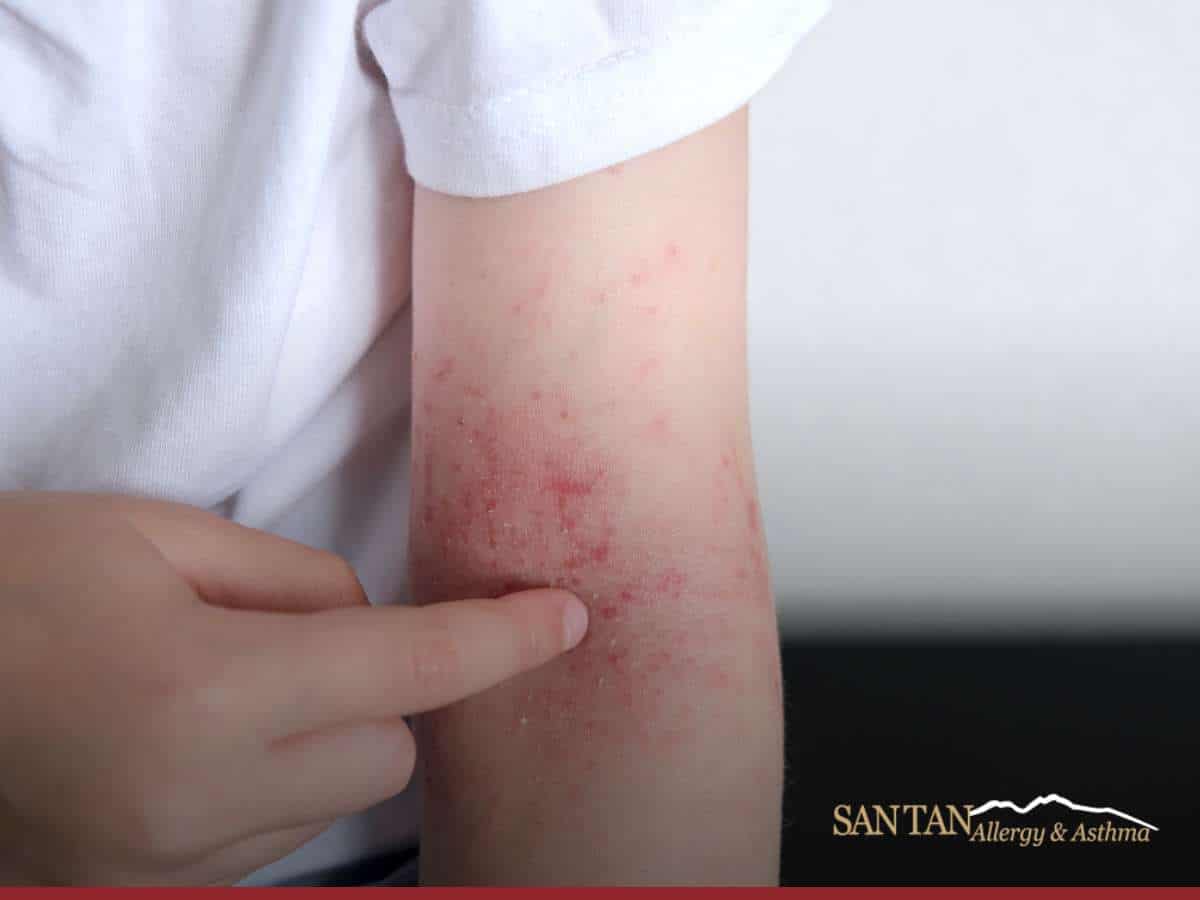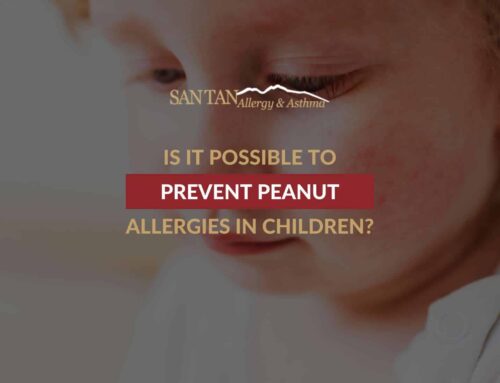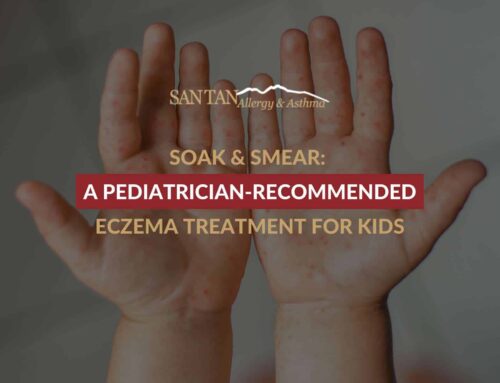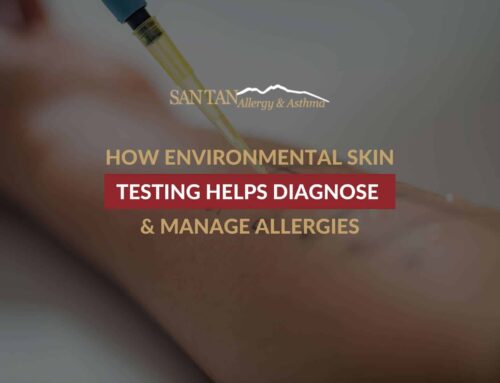Steps To Effectively Manage This Delayed Food Allergy
Food allergy reactions aren’t always immediate or obvious. Imagine feeding your baby a seemingly harmless food like rice or oats, only to have them violently vomit hours later while looking pale and limp in your arms. It isn’t the kind of reaction most people expect from a food allergy. There are no hives and no swelling, just a delayed and deeply alarming response. This is the reality for families dealing with Food Protein-Induced Enterocolitis Syndrome (FPIES).
Unlike other food allergies, FPIES does not show up on standard allergy tests. This makes getting a diagnosis both frustrating and emotionally exhausting. That is why working with an experienced allergist is so important in identifying and managing this often misunderstood condition.
In this blog post, we will explain what FPIES is, how it differs from other food allergies, and the steps you can take to manage it with more confidence and peace of mind.

What is Food Protein-Induced Enterocolitis Syndrome(FPIES)?
FPIES is a type of food allergy affecting the gastrointestinal (GI) tract. It primarily affects infants and young children.
Unlike classic food allergies that cause immediate reactions such as hives or swelling, FPIES reactions are delayed and typically occur a few hours after consuming a trigger.
Moreover, this condition doesn’t show up on standard allergy tests.
The condition causes inflammation in the small and large intestines, leading to a range of symptoms that can be distressing and, in some cases, severe.
While FPIES can be alarming, it is manageable with the right diagnosis, avoidance strategies, and support from healthcare providers.
Common FPIES Symptoms: What To Look For In Your Child
FPIES symptoms in infants typically appear 1 to 4 hours after consuming a trigger food and can escalate quickly. Common symptoms include:
- Intense, repetitive vomiting
- Lethargy or appearing unusually sleepy
- Pale or grayish skin tone
- Diarrhea (often delayed, occurring 6–24 hours later
- Low blood pressure or body temperature in severe cases
- Difficulty feeding or disinterest in food
In chronic cases (where the trigger food is regularly consumed) symptoms may include ongoing vomiting, weight loss, poor growth, and dehydration. These signs can mimic stomach viruses or sepsis, which is why misdiagnosis is quite common (especially if there’s not a clear food-related pattern).
How Is FPIES Diagnosed?
FPIES diagnosis can be a challenge, as its symptoms are often mistaken for a bacterial infection (sepsis) or gastrointestinal viral illness. Although it is a type of food allergy, FPIES does not show up on standard allergy tests such as skin-prick or blood tests—these usually return negative results even when a trigger food is involved.
If you suspect that your child has FPIES, consult an allergist. Diagnosis typically involves reviewing the child’s medical history, evaluating symptom patterns, and ruling out other potential conditions.
In somes cases, the allergist may ask for a clinically supervised oral food challenge. However, this step is often unnecessary for infants whose symptoms resolve completely once the suspected food is removed from their diet. Oral food challenges can also be used later to assess whether a child has outgrown the condition.
Common Causes & Food Triggers Of FPIES In Children
FPIES is caused by an atypical immune reaction in the gastrointestinal tract to certain food proteins. Though the exact mechanism remains unclear, the response leads to inflammation, fluid loss, and impaired digestion.
These common FPIES triggers can vary between children, but the most frequent include:
- Cow’s milk and soy (often among the first introduced proteins)
- Rice, oats, and other grains
- Poultry (especially chicken and turkey)
- Root vegetables like sweet potatoes
- Legumes, including peas and lentils
Even trace amounts of a trigger can cause a reaction. Some children may react to multiple foods, while others are sensitive to just one.
Who Gets FPIES? Factors That Increase Likelihood
FPIES typically appears in the first months of life, especially during the introduction of formula or solid foods. It can occur in both breastfed and formula-fed infants, though it often becomes apparent when a new protein source is introduced.
While anyone can develop FPIES, there’s a slightly higher risk in children with a personal or family history of allergies, eczema, or asthma. Boys and girls are equally affected, and although rare, FPIES can persist into adolescence or adulthood.
Effective Treatment & Management Strategies
Currently, there is no medication to cure FPIES. The most effective approach is strict avoidance of the identified trigger food(s). Once the specific food is known, caregivers are advised to eliminate it from the child’s diet and read labels carefully to prevent accidental exposure.
Here are a few management strategies that can help:
- Personalized care from allergists or pediatric specialists
- An emergency action plan for accidental exposures
- Safe food substitutions to ensure proper nutrition
- Food reintroduction trials under medical supervision to assess tolerance over time
Most children outgrow FPIES by age 3 to 5, but this varies by individual and trigger food. In cases of accidental ingestion, treatment may involve IV fluids and medications to stabilize symptoms.
Why Professional Allergy Care Matters For FPIES Diagnosis & Management
Since FPIES doesn’t show up on traditional allergy tests, its diagnosis can be quite difficult, so it’s crucial to work with experienced allergists and pediatricians. These professionals can evaluate medical history, monitor symptoms, and perform controlled food challenges when appropriate.
Having a knowledgeable care team helps parents feel more confident, especially when it comes to navigating meal planning, emergency responses, and long-term monitoring. Support groups and online resources can also provide valuable community and education throughout the journey.
If you suspect your child may have FPIES, the team at San Tan Allergy & Asthma is here to help. Our specialists understand the challenges families face with this condition and can guide you through diagnosis, management, and long-term care. Reach out to us to learn more or to schedule a consultation.
San Tan Allergy & Asthma
4915 E Baseline Rd #112
Gilbert, AZ 85234
Phone: 480-626-6600
Email: officemanager@santanallergy.com
Website: https://santanallergy.com/








